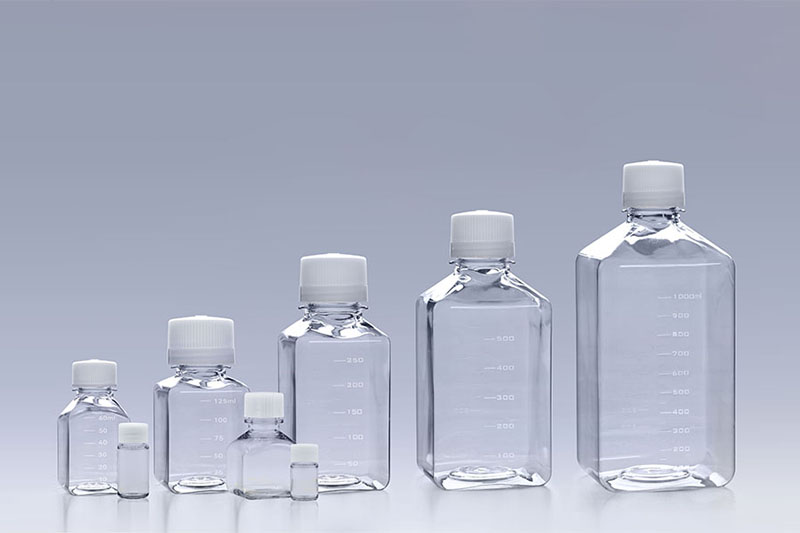Serum, as a good assistant in cell culture, plays an important role in the growth process of cells. The quality of serum directly affects the results of cell culture. If there is too much precipitation, it will inevitably cause concern. So, how do we avoid precipitation in petg media bottles?
First of all, we should have a correct understanding of precipitation. When turbid and flocculent substances are found after thawing the serum, there is no need to panic. This is a normal phenomenon. Common deposits include fibrin, calcium phosphate, cholesterol, fatty acid esters, and some proteins. The amount of serum sedimentation is not directly proportional to the quality of the serum. If serum precipitation occurs, don’t worry. Usually, centrifuge at 400-600g for 5 minutes to remove large particle precipitation, and then use the supernatant.
Of course, if you still feel uneasy, you can take the following measures to avoid precipitation in the petg media bottles as much as possible. 1. Correct thawing: Thaw at 2℃~8℃, shake well intermittently during the thawing process (shake gently at intervals), dissolving at room temperature or in a water bath can easily cause increased precipitation. 2. Correct use and storage: Do not use heat inactivation unless necessary (heat inactivation will denature and precipitate some proteins in the serum, affecting the quality of the serum); it is not advisable to preheat at 37°C. Serum and complete culture media can usually be preheated at room temperature; avoid Repeated freezing and thawing; avoid ultraviolet radiation; avoid long-term storage at 2-8°C. Store at -20°C for long-term storage after aliquoting and dissolve as needed.
Above we introduced the types of sediments in petg media bottles and how to avoid them. In short, precipitation in serum does not necessarily affect cell growth. Learning the correct thawing and storage methods is the key.
The FAI climbed 5.9 percent year-on-year in the first 11 months of 2018, quickening from the 5.7-percent growth in Jan-Oct, the National Bureau of Statistics (NBS) said Friday in an online statement.
The key indicator of investment, dubbed a major growth driver, hit the bottom in August and has since started to rebound steadily.
In the face of emerging economic challenges home and abroad, China has stepped up efforts to stabilize investment, in particular rolling out measures to motivate private investors and channel funds into infrastructure.
Friday's data showed private investment, accounting for more than 60 percent of the total FAI, expanded by a brisk 8.7 percent.
NBS spokesperson Mao Shengyong said funds into weak economic links registered rapid increases as investment in environmental protection and agriculture jumped 42 percent and 12.5 percent respectively, much faster than the average.
In breakdown, investment in high-tech and equipment manufacturing remained vigorous with 16.1-percent and 11.6-percent increases respectively in the first 11 months. Infrastructure investment gained 3.7 percent, staying flat. Investment in property development rose 9.7 percent, also unchanged.
 English
English



















































 PETG Media Bottles
PETG Media Bottles